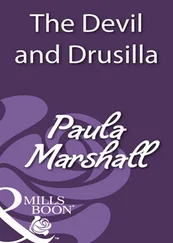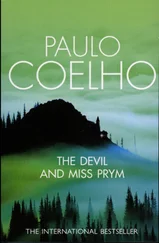Andrew Pepper - Kill-Devil and Water
Здесь есть возможность читать онлайн «Andrew Pepper - Kill-Devil and Water» весь текст электронной книги совершенно бесплатно (целиком полную версию без сокращений). В некоторых случаях можно слушать аудио, скачать через торрент в формате fb2 и присутствует краткое содержание. Жанр: Исторический детектив, на английском языке. Описание произведения, (предисловие) а так же отзывы посетителей доступны на портале библиотеки ЛибКат.
- Название:Kill-Devil and Water
- Автор:
- Жанр:
- Год:неизвестен
- ISBN:нет данных
- Рейтинг книги:3 / 5. Голосов: 1
-
Избранное:Добавить в избранное
- Отзывы:
-
Ваша оценка:
- 60
- 1
- 2
- 3
- 4
- 5
Kill-Devil and Water: краткое содержание, описание и аннотация
Предлагаем к чтению аннотацию, описание, краткое содержание или предисловие (зависит от того, что написал сам автор книги «Kill-Devil and Water»). Если вы не нашли необходимую информацию о книге — напишите в комментариях, мы постараемся отыскать её.
Kill-Devil and Water — читать онлайн бесплатно полную книгу (весь текст) целиком
Ниже представлен текст книги, разбитый по страницам. Система сохранения места последней прочитанной страницы, позволяет с удобством читать онлайн бесплатно книгу «Kill-Devil and Water», без необходимости каждый раз заново искать на чём Вы остановились. Поставьте закладку, и сможете в любой момент перейти на страницу, на которой закончили чтение.
Интервал:
Закладка:
According to Mary, the fact that she and Elizabeth were half-sisters, by the same father, was an open secret amongst the estate’s black population. Unsurprisingly, this had never been acknowledged by the Malverns, who saw her merely as a negro slave. Similarly, Elizabeth’s incestuous affair with her brother, Charles, was never brought up, even though most of the household knew about it. Mary didn’t know whether Silas ever found out but many of the black servants at Ginger Hill suspected he knew. According to some, it was the main reason he had brought forward his plans to retire to London and why he’d insisted that Elizabeth accompany him, forcing Charles to remain at Ginger Hill against his will to run the estate. It was after their departure that Charles’s attention had turned, quite naturally, to Mary, who, though a little darker skinned, looked eerily like his sister.
At the time Mary had been sleeping with Isaac Webb, but it was Webb, and particularly Harper, who had pushed Mary into an affair with Charles: both men saw it as a good opportunity to exploit the Malvern family. And when, a year or so later, a besotted Charles proposed marriage to her, they had insisted that she accept.
When Charles had discovered that Mary was still sleeping with Isaac Webb, rather than confront her directly, he had decided to send her to London, where she would live with his godfather until he could arrange the sale of Ginger Hill. For Harper and Webb, the idea that Mary would be in the same city as Elizabeth Malvern — without Charles to interfere — was too good a chance to pass up. Ideas were discussed; plans were formulated. Arthur Sobers volunteered to accompany her to London — without, of course, Charles Malvern learning about their plan. Meanwhile, wanting Mary to be safe in London but away from the disapproving stares of his family, Charles had arranged for her to stay in an apartment annexed to his godfather’s home in Mayfair.
The first obstacle that Mary had faced upon her arrival at the West India Docks in London was William Alefounder. He was a friend of Charles’s who had visited Ginger Hill the previous year. He, too, had noticed the physical resemblance between Mary and his former lover, Elizabeth Malvern. He’d followed her around the great house and had tried to flirt with her. According to Mary, they had slept together once in Jamaica. From her point of view, it had been a mistake; she had been flattered by his attention and had succumbed one night when a little drunk. But Alefounder had fallen for her, and when Charles Malvern sent him a letter explaining that Mary was to travel ahead of him to London, the besotted trader insisted on meeting her at the quayside and escorting her to her final destination. At first Mary didn’t want anything to do with him — the last thing she needed was an additional complication. But a few days later, when it became clear to her that Lord Bedford didn’t intend to let her have the freedom of the city without a chaperone, she sent Alefounder a message asking him to show her the sights. By Mary’s own account, this was a cruel thing to do, because it gave the trader some encouragement. He set up an apartment on The Strand and took her there one evening. (Later Pyke would surmise that Alefounder’s wife must have followed him there and seen him and Mary together.) According to her, nothing had happened between them; she didn’t particularly like Alefounder or find him attractive and had merely used him as a foil in order to escape the attentions of Bedford.
Under the guise of spending the day with Alefounder, Mary had, in fact, travelled to the Bluefield lodging house on the Ratcliff Highway, where Sobers had taken a room, and had managed to find Phillip Malvern. Initially Phillip was shocked to discover that he had another daughter; Bertha had never told him that Mary was his, and since he’d disappeared into self-imposed exile after he’d been blinded by Silas, he hadn’t seen her grow up. Old and fragile, it had taken him a few hours to adjust to the news, and it was only when she told him that Bertha wanted him to go back to Jamaica that he finally seemed to believe her. He admitted that Bertha had been the true love of his life. They spent the afternoon and some of the next day together. Phillip was intrigued by Sobers’s claims that Mary was a myalist and begged for her assistance in summoning spirits and ‘vanquishing the demons’ who’d stolen his eyesight. Eventually, he took them down to his underground chamber and showed them his collection of eyeballs. By her own admission, Mary was appalled by what she’d seen and tried to force Phillip to tell her where the eyeballs had come from, and whether he had harmed any of the women. Shaken, he confessed that Elizabeth had procured the bodies for him — he said he didn’t know where they’d come from and only later, when Mary confronted Elizabeth, did she find out the truth.
Mary insisted that Phillip had not been involved in the plot to kill Elizabeth Malvern. From her descriptions of him, Phillip came across as a kind, lonely, deluded old man who was grateful to Elizabeth and didn’t seem to understand the full horrors of what she and Jemmy Crane were doing. Pyke surmised that, out of gratitude, Phillip had told Elizabeth about the sewer access to the bullion vault at the Bank of England. He obeyed, of course, when she swore him to absolute secrecy. Elizabeth, for her part, had no intention of keeping it a secret, and when she told Crane about it, she set in motion a chain of events that inadvertently culminated in Crane’s capture and arrest. Mary swore that she didn’t know what had happened to Phillip and seemed genuinely upset when Pyke told her that he believed Phillip was being held captive by Crane’s accomplices somewhere in the city, and might even be dead.
‘I promised my mother I’d bring him back to her,’ Mary said, facing the prospect that, despite her best efforts, she might fail to make good on this pledge.
Elizabeth Malvern’s fate had effectively been sealed before Mary had even left Jamaica, but the plan — hatched by Harper and Webb — was put into action when Mary went to the Malvern residence to announce that she was going to marry Charles. This drew a predictable response from Silas and she was escorted from the house. Before Mary left, she told Silas that she was not going to change her mind — such were her feelings for Charles — and that she was willing to discuss the matter only with Elizabeth. Mary had left her address at the Bluefield lodging house, with instructions that Elizabeth should meet her there. Like her father, Elizabeth had wanted Mary out of their lives and certainly didn’t want her former servant marrying her beloved brother. For this reason, Elizabeth had asked Crane and his friends to go to the lodging house to try to scare Mary into abandoning her wedding plans, but they had come up against Arthur Sobers. Later, Elizabeth sent word that she would be willing to talk to Mary at her house. Mary had agreed to go because it suited her own ambitions, but only on the condition that no one else was present, not even servants. Together with Arthur Sobers, she crossed the city on a horse and cart that Sobers had acquired the previous day. Convinced that Elizabeth was alone, Mary had excused herself and slipped downstairs to let Sobers into the house via the back entrance. According to Mary, Sobers was the one who’d actually strangled Elizabeth, but she didn’t deny that she’d been a willing participant, pinning her half-sister to the floor.
When Mary described the murder, Pyke tried to gauge whether she felt any guilt or remorse, but her face remained blank.
Afterwards, Mary and Sobers took off Elizabeth’s clothes, removed her jewellery and laid her out on a tarpaulin. They had already decided to cover the body with quicklime — it would dissolve some of the flesh and make a positive identification difficult. The more pressing dilemma had been what to do about Elizabeth’s eyes. They were emerald green and anyone who’d seen Mary and who might be required to identify the body might notice the discrepancy. They’d already decided to try to make Elizabeth’s death — Mary’s death — resemble the murders they’d heard about from Phillip. If these murders were already known to the police, they would likely assume that Mary — or rather Elizabeth — had been killed by the same man. According to Mary, she had been the one who’d cut out her half-sister’s eyes with a scalpel borrowed from Phillip. Once this procedure had been completed, they carried Elizabeth’s corpse to the cart, hid it under a tarpaulin and returned to the Ratcliff Highway. There, at a spot they’d found earlier, they rolled the corpse down a grassy slope and left one of Mary’s dresses — the one she’d been wearing that morning at the Bluefield — nearby, together with a bottle of rum. That, and washing the body with the rum, had been her idea. The scribbled note bearing the name of the Bluefield, which was left in the dress pocket, would lead the police to the landlord, Thrale, who would, in turn, identify the corpse as Mary. The rum and the apparently ritualistic nature of the killing would underline the fact that a black or mulatto woman had been killed. No one would think the corpse belonged to a white woman. The policemen wouldn’t look at the skin colour; all they would see was a body decomposing with quicklime, the missing eyeballs, the rum.
Читать дальшеИнтервал:
Закладка:
Похожие книги на «Kill-Devil and Water»
Представляем Вашему вниманию похожие книги на «Kill-Devil and Water» списком для выбора. Мы отобрали схожую по названию и смыслу литературу в надежде предоставить читателям больше вариантов отыскать новые, интересные, ещё непрочитанные произведения.
Обсуждение, отзывы о книге «Kill-Devil and Water» и просто собственные мнения читателей. Оставьте ваши комментарии, напишите, что Вы думаете о произведении, его смысле или главных героях. Укажите что конкретно понравилось, а что нет, и почему Вы так считаете.












